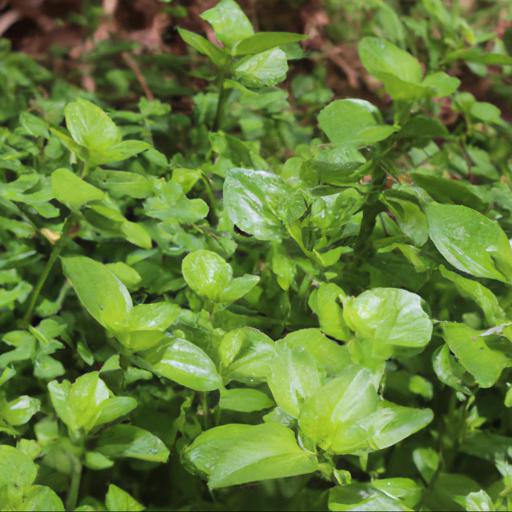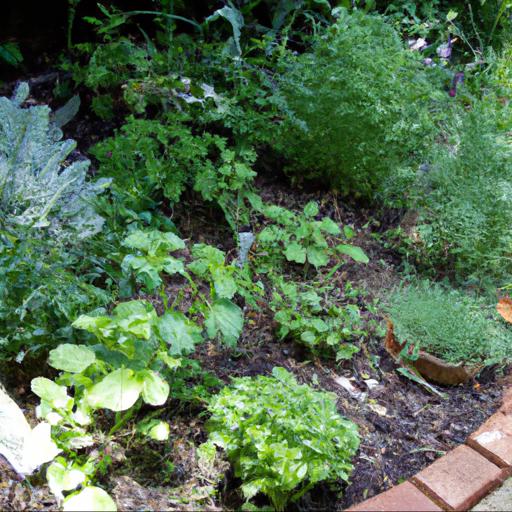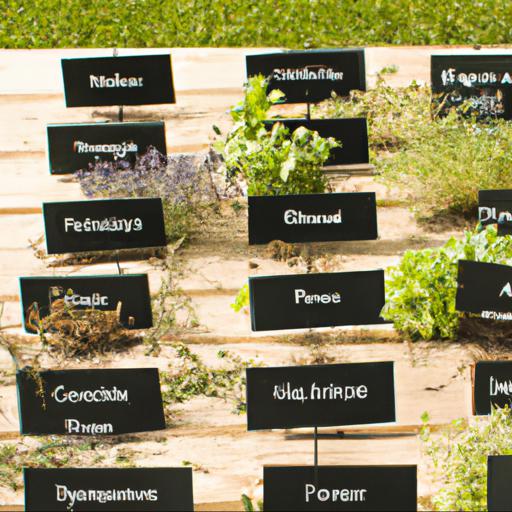Are you looking for some herbs to add to your garden that can thrive in the shade? You’re in luck! There are plenty of herbs that can survive and even thrive in the shade.
Here are eight shade-loving herbs to grow that will add flavor, texture, and color to your garden. From fragrant rosemary to delicate lemon balm, these herbs can be used in many recipes and are easy to care for.
With a little bit of effort, you can have a lush and vibrant herb garden, even in the shade!
Benefits of growing shade-loving herbs

As a UK garden expert, I often get asked about what herbs to grow in shady places in the garden. Growing herbs in shadier parts of the garden can be a great way of introducing some life to these areas and taking advantage of available light levels without extra work. There are a number of shade-loving herbs that will thrive in your garden.
These herbs will bring a noticeable change to dull, shady spaces. There are eight great shade-loving herbs to choose from when looking to liven up your garden with some greenery.
These include the likes of lemon balm, comfrey, winter savory, mullein, horehound, lovage, woodruff, and field horsetail. Each of these herbs has unique properties and aromas. For example, lemon balm is known for its lemony aroma and can be used in cooking, while comfrey is known for its medicinal properties and is used as a topical herbal treatment.
It’s also important to note that shade-loving herbs are much easier to maintain and care for compared to some other plants. For example, they won’t need to be watered as often as plants that need more sunlight as they don’t need as much water to thrive.
Additionally, these herbs are fairly low maintenance and don’t require lots of pruning or special treatment. This makes shade-loving herbs an ideal choice for those who want to spruce up shadier corners of their garden without taking on a lot of work.
In conclusion, there are a number of shade-loving herbs that can be planted in gardens that don’t receive much direct sunlight. These herbs are ideal for taking advantage of available light levels and bringing life to dull shady spaces. Lemon balm, comfrey, winter savory, mullein, horehound, lovage, woodruff, and field horsetail are some of the best shade-loving herbs to grow and each has unique properties and aromas.
With regards to upkeep, these herbs are also much easier to care for compared to some other plants.
Eight shade-loving herbs to grow

As any garden enthusiast knows, herbs are an essential part of a healthy garden, and there are certain types which especially love to grow in shade. Here are eight shade-loving herbs that every gardener should consider:Mint is a refreshing flavor to add to dishes and drinks, and it can easily survive in a shady spot.
The only caveat is to make sure you contain in a pot or planter; mint spreads quickly and can take over your lawn or other gardens. Chamomile is a versatile herb that loves the cool weather that comes with a shady spot. It not only smells great, but has great uses in teas and essential oils.
Plus, it grows in little clumps, making it easy to manage in a garden setting. Thyme can also tolerate shade, and not just the culinary variety – many flowers like Creeping Thyme and Wooly Thyme love the shade.
All of them can be used for culinary purposes, or to add a gentle, herbal scent to your garden. Lemon Balm is a great herb to add to your garden, as it releases a strong lemon aroma when crushed. Plus, it’s reputed to have a calming, ephermal effect when brewed into a tea.
Parsley is such a common herb and is normally found in sunny parts of a garden, but it can also survive in shady areas. It can provide a bright contrast to shady garden spaces, while also adding a great flavor to dishes. Lovage is an herb with a strong, earthy flavor, and one that should be considered for shady areas.
It’s also easy to grow and doesn’t require a lot of attention. Sorrel is often used for salads, and it loves moist, shady areas.
It’s simple to grow and can even be used a ground cover in shady areas, creating a gentle, fresh scent to the whole area. Finally, Rosemary is a classic garden herb and one that’s better suited to shady areas. It grows best when planted in full patches, and its woody scent is absolutey perfect for the isle of a garden. By considering and planting these eight shade-loving herbs, you can make the most of any garden and create a unique, herbal scent. It’s simple to add them to any garden space, no matter the size or orientation.
Tips for growing shade-loving herbs

For gardeners with shady areas, growing herbs doesn’t have to be an impossibility. There are plenty of shade-loving herbs that can thrive in areas with as little as three hours of sun.
From parsley to lemon balm, there are eight herbs that specialists recommend as great options for shade gardens. Take parsley, for instance. This herb is a great choice for shady areas because it quickly grows in moist but well-draining soils.
Parsley is a plant that’s low-maintenance and doesn’t need much care. It provides texture and decorative flair to the garden, making it a great choice for those in search of a sunny-looking shade area.
Next there’s mint, another well-known herb which has long been praised for its aroma and flavor. This shade-loving herb can quickly become overgrown, so it’s important that you choose a sunny spot to plant it. It requires frequent water and should be trimmed after it flowers to keep it looking neat.
You can also use its leaves in teas and salads for a subtle, refreshing flavor. Lemon balm is another great option for shady areas.
This herb adds a fresh, citrusy scent to the garden and requires little maintenance. It does well in deeper shade, so it’s ideal for those in search of a plant that won’t require much fussing over. It can be used to make teas and potpourri, or to flavor grilled veggies and soups.
Garlic chives, woodruff, creeping thyme, sweet woodruff and winter savory are all other shade-loving herbs that will do well in gardens without much direct sunlight. All of these herbs require regular watering and pruning to keep them healthy and looking their best. Regularly trimming and deadheading them will help keep growth under control and help them retain their luxurious appearance. For gardeners looking to add some culinary flavor and heighten the backdrop of their shade garden, these eight herbs are a great choice. With some regular water and care, these herbs will perform beautifully and provide lots of flavor to your plate!
Conclusion
This article provides information on eight herbs that prefer shade. These include sweet woodruff, lemon balm, mint, oregano, thyme, chives, parsley, and tarragon. These herbs are easy to grow and require minimal care.
They are perfect for adding flavor to meals and making your garden beautiful. With a little bit of effort, you can enjoy these herbs in your garden all year round.
FAQ
What are the benefits of growing shade-loving herbs?
The benefits of growing shade-loving herbs include reduced water requirements, increased disease resistance, and improved flavor. Shade-loving herbs also tend to be more tolerant of extreme temperatures, making them ideal for growing in areas with hot summers and cold winters.
What are some common shade-loving herbs?
Some common shade-loving herbs include mint, oregano, thyme, rosemary, chives, parsley, and dill.
How much shade do shade-loving herbs need?
Shade-loving herbs typically need partial shade, meaning they need at least 4 hours of direct sunlight each day and indirect sunlight the rest of the day.
How often should shade-loving herbs be watered?
Shade-loving herbs should be watered when the soil feels dry to the touch, usually every 1-2 weeks.
What type of soil is best for growing shade-loving herbs?
Loamy soil with good drainage is best for growing shade-loving herbs.
How can shade-loving herbs be used in cooking?
Shade-loving herbs can be used in cooking to add flavor and aroma to dishes. They can be used fresh or dried in a variety of recipes, such as soups, stews, salads, and sauces. They can also be used as garnishes or to infuse oils and vinegars.

